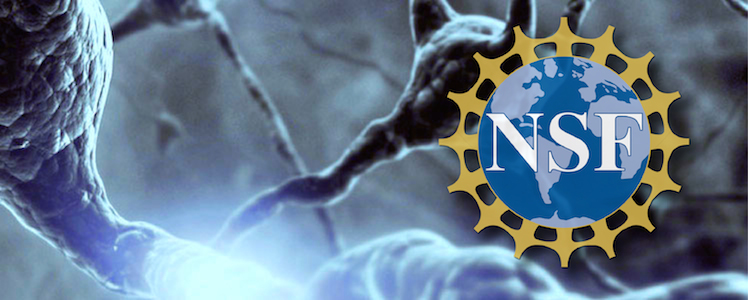Friday, September 26, 2014

CMU Team Awarded NSF Grant to Combine Biophysical and Statistical Models of Neuronal Computation
PITTSBURGH—Nathan Urban, interim provost and the Dr. Frederick A. Schwertz Distinguished Professor of Life Sciences, and Robert Kass, professor of statistics and machine learning, have received a $930,000 grant from the National Science Foundation to apply biological and statistical neuroscience approaches in order to create a better overall understanding of how neurons encode information. The research, which is funded by the NSF through the Collaborative Research in Computational Neuroscience (CRCNS) program, is part of Carnegie Mellon's BrainHubSM, an interdisciplinary neuroscience research initiative.
The brain contains billions of neurons, yet each neuron is not an identical copy of the next. Previous work from Urban's lab has shown that each individual neuron reacts to the same stimulus in its own unique way. The Carnegie Mellon researchers believe this diversity plays a critical role in how the brain computes information.
"For a long time, we didn't realize the significance of the differences between neurons. We thought it was just noise," said Urban, who is a member of Carnegie Mellon's Biological Sciences faculty and the joint Carnegie Mellon-University of Pittsburgh Center for the Neural Basis of Cognition (CNBC). "But the subtle nuances play a crucial role in brain function. Understanding the biology behind this could have a tremendous impact on our understanding of how the brain computes information."
The current grant involves a collaboration between the Carnegie Mellon researchers and a group led by Professor Alon Korngreen of Bar Ilan University in Israel. The international team will use biophysical techniques developed by Korngreen to create highly detailed computational models of the biological mechanisms that regulate neuronal activity in individual cells. They will combine this data with information gathered using statistical and stimulus reconstruction techniques developed by Urban and Kass, which reveal information about how neuronal activity relates to the computations that neurons perform, such as the coding of a stimulus. By combining the two techniques, they hope to reveal new information about how neuron biology impacts neuronal computation.
"We would like to be able to understand how the expression of particular proteins, such as ion channels, regulate the specific computations performed by neurons. Such work may provide insights into the ways that relatively simple mutations in these proteins might give rise to the complex deficits observed in brain diseases — pushing the field of neuroscience in the direction of considering some brain diseases in terms of the underlying deficits in computation," said Urban.
"Research into the biophysical and statistical analysis of neurons has been running in parallel paths," said Kass, who is also a faculty member in the CNBC. "By merging these paths, we stand to gain a much better understanding of the biological foundations that underlie computational coding of a stimulus."
The Israeli component of the project is being funded by the Israel Binational Science Foundation.
As the birthplace of artificial intelligence and cognitive psychology, Carnegie Mellon has been a leader in the study of brain and behavior for more than 50 years. The university has created some of the first cognitive tutors, helped to develop the Jeopardy-winning Watson, founded a ground-breaking doctoral program in neural computation, and completed cutting-edge work in understanding the genetics of autism. Building on its strengths in biology, computer science, psychology, statistics and engineering, CMU recently launched BrainHubSM, a global initiative that focuses on how the structure and activity of the brain give rise to complex behaviors. To learn more, visit www.cmu.edu/brainhub.
###
By: Jocelyn Duffy, jhduffy@andrew,cmu.edu, 412-268-9982